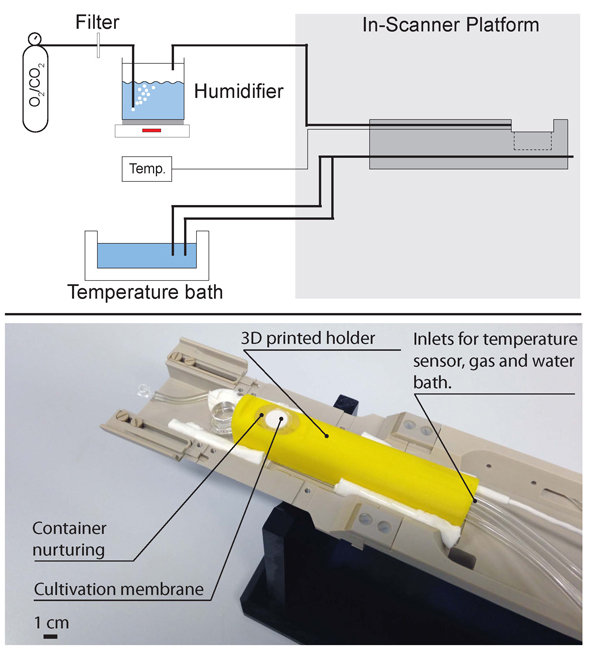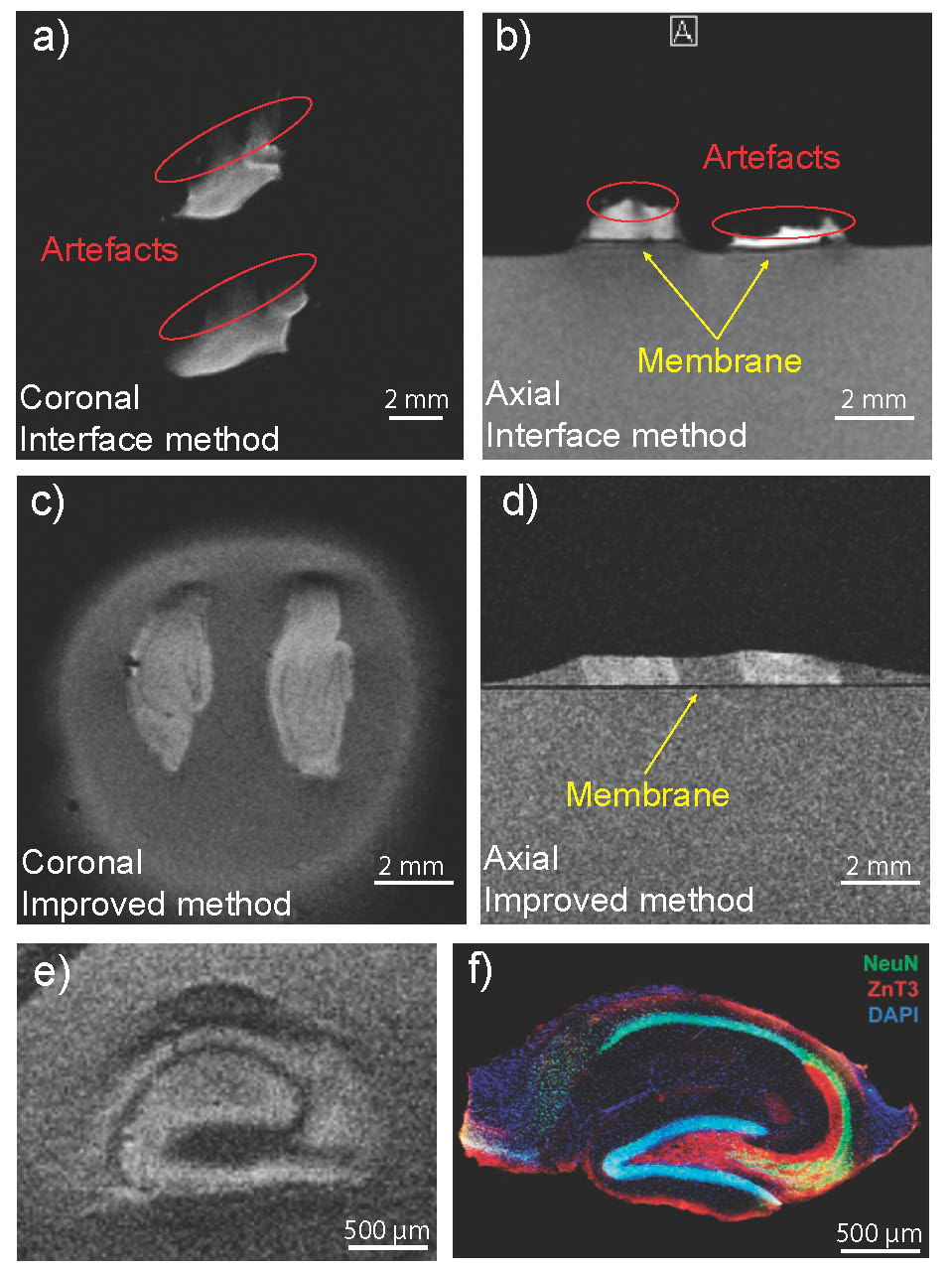Postersession - P-076
Merging Brain Slice Culturing And Magnetic Resonance Microscopy
- 1. University of Freiburg, BrainLinks-BrainTools Cluster of Excellence, Freiburg, Germany
- 2. University of Freiburg, Department of Microsystems Engineering, Freiburg, Germany
- 3. University Medical Center, Dept. of Radiology, Medical Physics, Freiburg, Germany
- 4. University Medical Center, Dept. of Neurosurgery, Experimental Epilepsy Research, Freiburg, Germany
- 5. Karlsruhe Institute of Technology, Institute for Microstructure Technology, Karlsruhe, Germany
Epilepsy is one of the most prevalent neurological disorders, which is accompanied by recurrent seizures. Epileptogenesis are the detailed morphological, molecular and electrophysiological changes of the affected neuronal network associated with epilepsy, which are not yet fully understood. An established in vitro model to examine epileptogenesis are organotypic hippocampal slice cultures (OHSC).

Top: Schematic of the incubator. Bottom: Photo of the incubator.
We introduce an incubator that enables repetitive measurements of OHSC in an MR scanner combined with the use of common protocols to cultivate OHSC for up to 6 months, thus giving the opportunity of developing a new methodology to study OSHC with magnetic resonance microscopy (MRM) to complement established methods such as immunohistochemical stainings.
The schematic set up and a photograph of the incubator is shown in fig. 1. The MR-compatible incubator enables to control the gas atmosphere (here: 95%/5% O2/CO2). An external gas humidifier minimises drying effects in order to avoid demoisturing of the OHSC. The incubator is temperature stabilised by connecting it to a temperature bath. The basis of the incubator is made from a 3D-printed ABS-holder, which is dimensioned for use in a Bruker CryoProbe. Nurturing medium is filled into an exchangeable custom-made PMMA container, into which a commercial 12 mm Millicell-HA cell culture plate insert can be mounted. This Millicell insert is compatible with commercial cell culture plates, which enables the cultivation of the OHSC between MRM measurements in standard lab equipment.
The first MRM experiments with PFA-fixed OHSC in the incubator in a 7 Tesla Bruker BioSpec 70/20 small animal scanner with a two-element Bruker CryoProbe demonstrated the MR compatibility and principle functionality of the system, and measurements on living, cultivated OHSC are on the way. As the interface method of cultivation of fixed hippocampal slices at the fluid-gas interface in direction of the B0-field induces strong artefacts in the MRM image (fig. 2 a & b), the culturing method is adapted to improve MRM image quality. This way, different subregions and neuronal cell layers within the OHSC can be identified (fig. 2 c & d). A first measurement of a living, cultured OHSC has been performed (fig. 2 e), showing a good correlation to immuno-histochemically stained tissue with other fixed adult brain slices as shown in fig. 2 f.

a) Coronal: Cultivated w. interface method. b) Axial: Cultivated w. interface method. c) Coronal: Cultivated w. improved method. d) Axial: Cultivated w. the improved method. e) Coronal: Acute OHSC. f) Histological staining of an OHSC
